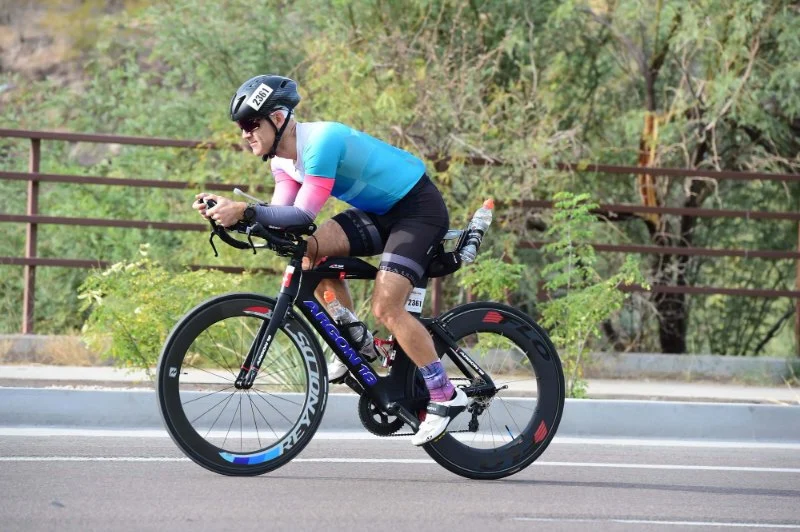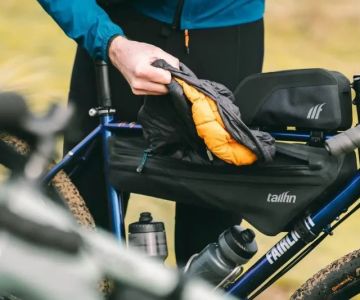
- 1. Understanding High Altitude and Its Impact on Cycling
- 2. Essential Gear for Riding in High Altitude
- 3. How to Properly Acclimatize for High Altitude Cycling
- 4. Breathing Techniques for High Altitude Cycling
- 5. Tips for a Successful High Altitude Cycling Experience
1. Understanding High Altitude and Its Impact on Cycling
Cycling at high altitudes offers both exhilarating views and challenging conditions. High altitudes, typically above 8,000 feet (2,400 meters), have lower oxygen levels, which can significantly affect your performance and endurance. The reduced oxygen can make breathing more difficult, causing faster fatigue, increased heart rate, and slower recovery times. Understanding how altitude affects the body is crucial for preparing for high-altitude cycling adventures.
2. Essential Gear for Riding in High Altitude
When preparing for a high-altitude ride, having the right gear is essential. At higher elevations, the weather can be unpredictable, so you'll need clothing that can keep you warm, dry, and comfortable. Consider the following gear:
- High-Performance Cycling Helmet: A lightweight, ventilated helmet is essential to keep your head cool while also offering protection against the harsh sun.
- Layered Clothing: Dress in moisture-wicking base layers, followed by thermal insulation and a weatherproof outer layer to protect against wind and rain.
- Hydration Pack: Dehydration can happen quickly at high altitudes, so carry a hydration pack or water bottles to stay hydrated throughout your ride.
- Windproof Gloves and Goggles: To shield your hands and eyes from cold temperatures and strong winds, choose gloves and goggles designed for mountain conditions.
- Cycling Shoes with Traction: Opt for shoes with excellent grip and warmth to ensure comfort during climbs and descents.
3. How to Properly Acclimatize for High Altitude Cycling
Acclimatization is key when cycling at high altitudes. Spending too much time at higher elevations without adjusting can lead to altitude sickness. Here’s how to properly acclimatize:
- Gradual Ascent: Ascend slowly to allow your body time to adapt. Plan to spend at least 24-48 hours at intermediate altitudes before heading higher.
- Rest Days: Incorporate rest days into your cycling schedule to give your body time to adjust and recover.
- Stay Hydrated: Drink plenty of water to help your body cope with the altitude and to prevent dehydration.
- Avoid Overexertion: Keep your intensity low during the first few days to help your body adjust to the thinner air.
4. Breathing Techniques for High Altitude Cycling
Proper breathing techniques are essential for maintaining energy levels and maximizing your performance at high altitudes. Here are some techniques to help:
- Diaphragmatic Breathing: Breathe deeply from your diaphragm rather than shallow chest breathing to get more oxygen into your lungs.
- Pace Your Breathing: Adjust your breathing to match the effort level, ensuring that you're not overexerting yourself and can maintain a steady rhythm.
- Controlled Exhales: Focus on exhaling fully to expel carbon dioxide, which helps your body take in more oxygen.
5. Tips for a Successful High Altitude Cycling Experience
To ensure you have a safe and enjoyable high-altitude cycling experience, keep these tips in mind:
- Start Training at Lower Altitudes: Build your fitness at lower altitudes before tackling high elevation cycling to improve your endurance and stamina.
- Eat a Balanced Diet: Fuel your body with a diet high in complex carbohydrates and lean proteins to sustain energy levels during long rides.
- Take it Easy: Avoid pushing yourself too hard, especially on the first few days at altitude. Slow and steady wins the race!
- Listen to Your Body: If you start feeling symptoms of altitude sickness, such as dizziness, nausea, or headaches, stop cycling immediately and seek medical attention if necessary.







 Real Deal Bicycles5.0 (462 reviews)
Real Deal Bicycles5.0 (462 reviews) J & M Bike Shop3.0 (65 reviews)
J & M Bike Shop3.0 (65 reviews) The ReCYCLIST Bike Shop3.0 (150 reviews)
The ReCYCLIST Bike Shop3.0 (150 reviews) Trek Bicycle Westerville4.0 (458 reviews)
Trek Bicycle Westerville4.0 (458 reviews) Patio Bike Shop4.0 (42 reviews)
Patio Bike Shop4.0 (42 reviews) San Diego Bicycle Co3.0 (3 reviews)
San Diego Bicycle Co3.0 (3 reviews) How to Teach Kids to Ride a Bike: A Step-by-Step Guide for Parents
How to Teach Kids to Ride a Bike: A Step-by-Step Guide for Parents Tips for Riding on Busy City Streets: Smart Strategies for Urban Cyclists
Tips for Riding on Busy City Streets: Smart Strategies for Urban Cyclists Best US National Parks for Mountain Biking: Ride Epic Trails Across America
Best US National Parks for Mountain Biking: Ride Epic Trails Across America Best Aero Helmets for Time Trials and Racing
Best Aero Helmets for Time Trials and Racing How to Clean and Lubricate Your Bike Chain Like a Pro
How to Clean and Lubricate Your Bike Chain Like a Pro 10 Must-Have Items for Long-Distance Cycling Trips
10 Must-Have Items for Long-Distance Cycling Trips